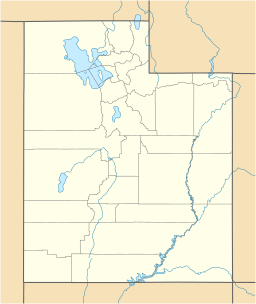Goshen Reservoir facts for kids
Quick facts for kids Goshen Reservoir |
|
|---|---|
| Location | Utah County, Utah, United States |
| Coordinates | 39°56′49″N 111°56′05″W / 39.94694°N 111.93472°W |
| Type | reservoir |
| Primary inflows | Currant Creek |
| Primary outflows | Currant Creek |
| Basin countries | United States |
Goshen Reservoir is a small reservoir found in Utah County, Utah. A reservoir is like a big, artificial lake where water is stored. This particular reservoir holds water from Currant Creek. It is located downstream from another reservoir called Mona Reservoir. The Goshen Irrigation Company owns and takes care of Goshen Reservoir.
Contents
What is Goshen Reservoir?
Goshen Reservoir is a place where water is collected and stored. It is not a natural lake. Instead, it was built by people to help manage water resources. The reservoir is created by building a dam across a river or stream. This dam holds back the water, forming the reservoir.
Where is Goshen Reservoir Located?
This reservoir is in Utah County, Utah, which is a county in the state of Utah in the United States. It's part of a system of waterways that are important for the local area. The water that fills Goshen Reservoir comes from a stream called Currant Creek. This creek also flows out of the reservoir, continuing its journey.
Who Manages Goshen Reservoir?
The Goshen Irrigation Company is in charge of Goshen Reservoir. An "irrigation company" is a group or business that manages water. They make sure water is available for things like farming. They also handle the upkeep and safety of the reservoir. This includes making sure the dam is strong and that the water levels are correct.
Why is Goshen Reservoir Important?
Reservoirs like Goshen Reservoir play a big role in communities. They store water that can be used for many purposes. For example, the water might be used to water crops on farms. This is called "irrigation." It helps farmers grow food, especially in places where rainfall isn't always enough. Reservoirs can also help control floods by holding back extra water during heavy rains. They are a key part of managing water for people and nature.



